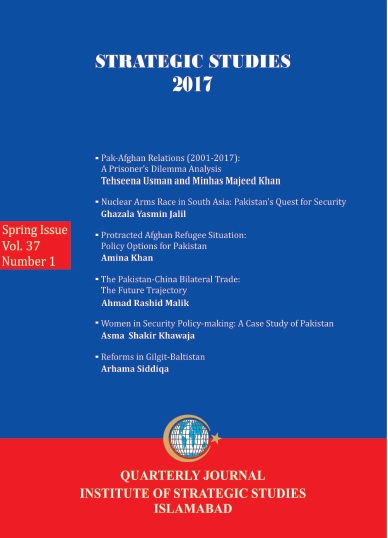Protracted Afghan Refugee Situation: Policy Options for Pakistan
Keywords:
Refugees, Repatriation, Pak- Afghan Relations, Pak-Afghan Border, Prolonged Conflict, United Nations, International AssistanceAbstract
Pakistan provided shelter to one of the world’s largest protracted refugee populations ─ more than five million Afghan refugees have been living in Pakistan since 1979. Continued violence and political and economic turmoil in Afghanistan have discouraged refugees to return and resulted in the continued influx of Afghan refugees into Pakistan. Since 2002, 3.8 million (Afghans) have returned to Afghanistan but many returnees keep trickling back to Pakistan.[1] Over the years, Afghan refugees have become a serious concern for Pakistan and an irritant in Pakistan-Afghan relations due to declining donor assistance, domestic constraints, weak economy, refugee fatigue, and the growing threat of terrorism. Currently, there are three million registered and unregistered Afghan refugees,[2] however, the number of unregistered refugees is believed to be far greater since movement across the Pak-Afghan border has traditionally taken place under an unregulated and unmonitored system, thus making it close to impossible to give an accurate number of unregistered refugees.[3] As a result, Pakistan has been the most vulnerable country to mass movement, militants, trafficking of drugs and arms from Afghanistan. Although the UNHCR provides assistance for only one point five million registered refugees of the total three million, it is estimated that during the past 34 years, Pakistan has spent hundreds of billions of dollars on hosting Afghan refugees. Although, the UNHCR has doubled the assistance package from US$200 to US$400 per person for the registered Afghan

Published
How to Cite
Issue
Section

This work is licensed under a Creative Commons Attribution-NonCommercial 4.0 International License.



